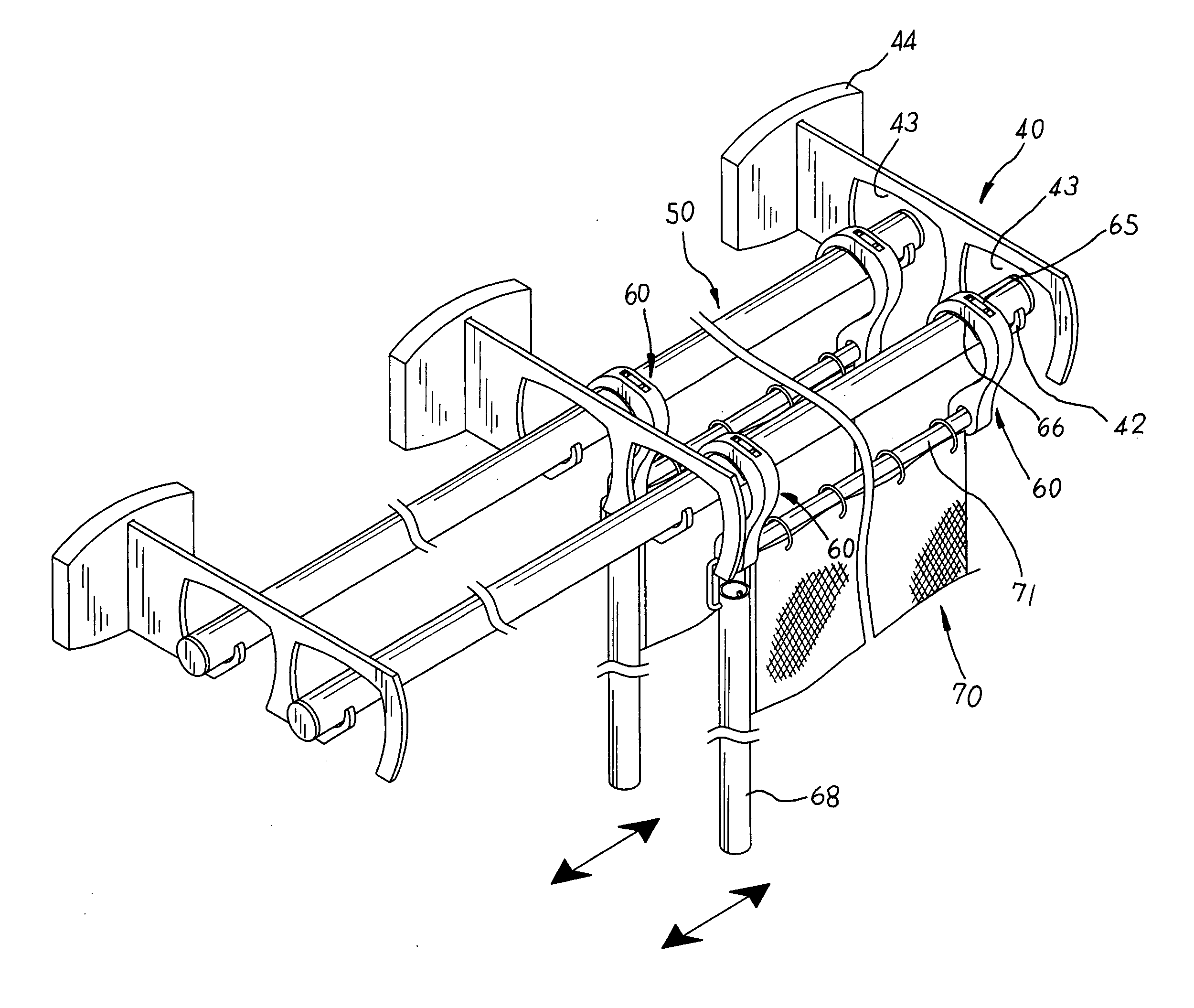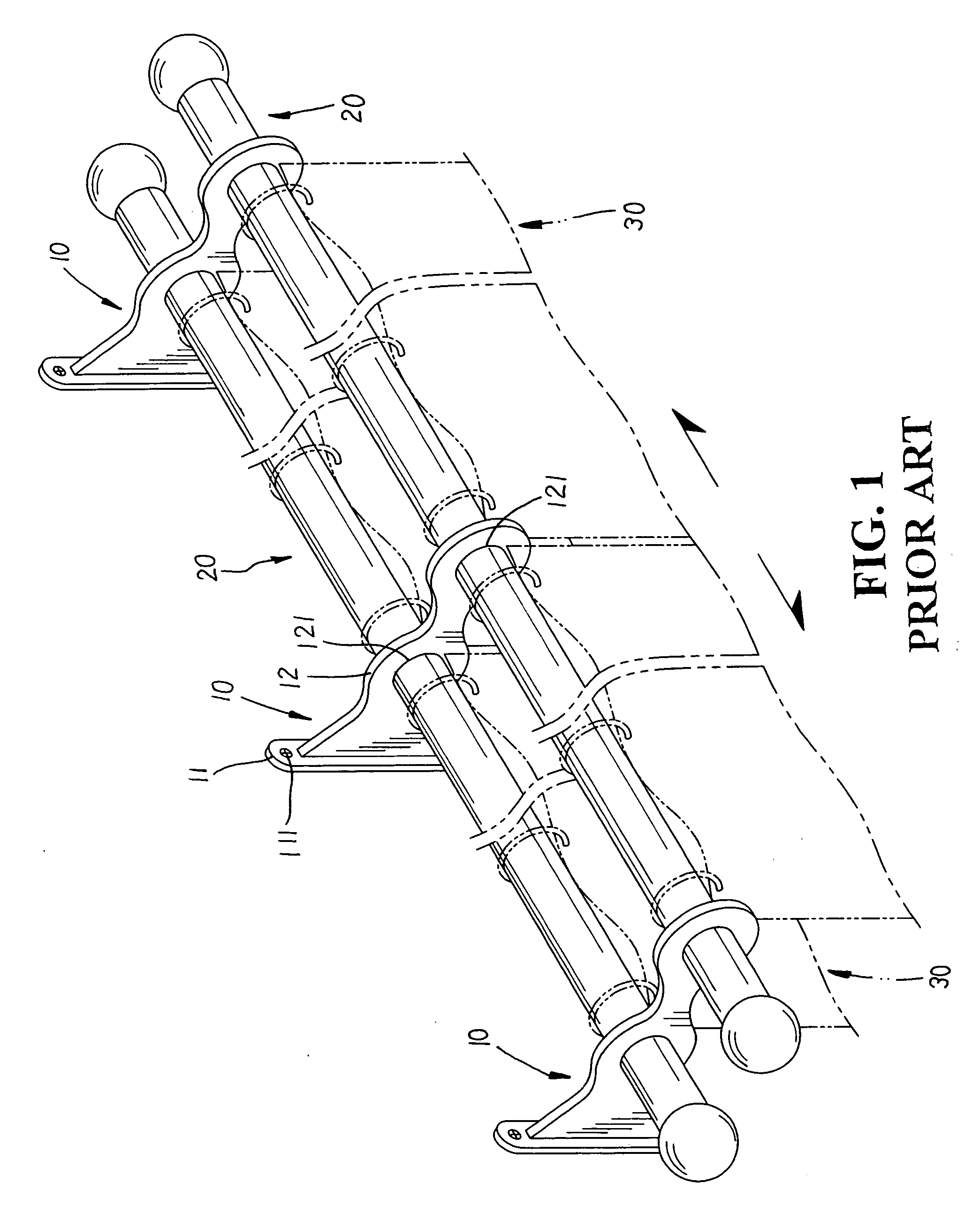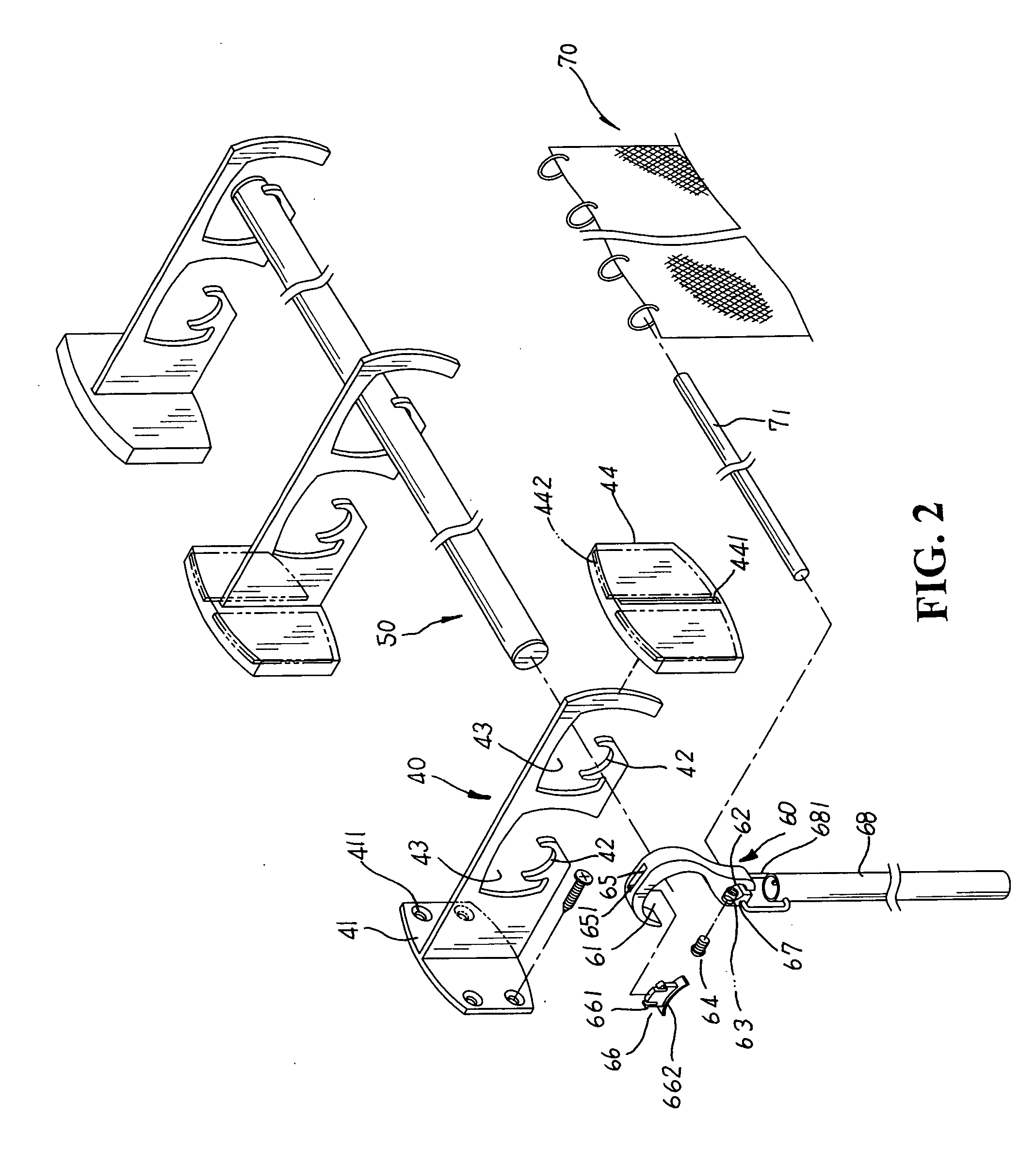Traverse-type window blind with multiple rods and blinds
- Summary
- Abstract
- Description
- Claims
- Application Information
AI Technical Summary
Benefits of technology
Problems solved by technology
Method used
Image
Examples
Embodiment Construction
[0014] Please refer to FIGS. 2, 3. The present invention is related to a traverse-type window blind with multiple rods and blinds, including brackets 40, support rods 50, sliding hooks 60, and blind bodies 70. Each bracket 40 has an abutment face 41 with thru-holes 411 disposed at one side thereon to be fixedly locked to a sidewall of a window frame thereby, and at least two or more front and rear support portions 42 each having an arcuate support surface defining thereon are sequentially arranged in an equal space to extend forwards at one side of the abutment face 41 for the mounting of the support rods 50 thereon respectively. The outer periphery of each support portion 42 is defined by an inverted U-shaped traverse space 43, and a decorative cover 44 is provided to apply to the outer side of the abutment face 41 thereon, permitting an even and neat look of the bracket 40 thereby. The decorative cover 44 identically shaped like the abutment face 441 thereof has a passable slot 44...
PUM
 Login to View More
Login to View More Abstract
Description
Claims
Application Information
 Login to View More
Login to View More - R&D
- Intellectual Property
- Life Sciences
- Materials
- Tech Scout
- Unparalleled Data Quality
- Higher Quality Content
- 60% Fewer Hallucinations
Browse by: Latest US Patents, China's latest patents, Technical Efficacy Thesaurus, Application Domain, Technology Topic, Popular Technical Reports.
© 2025 PatSnap. All rights reserved.Legal|Privacy policy|Modern Slavery Act Transparency Statement|Sitemap|About US| Contact US: help@patsnap.com



